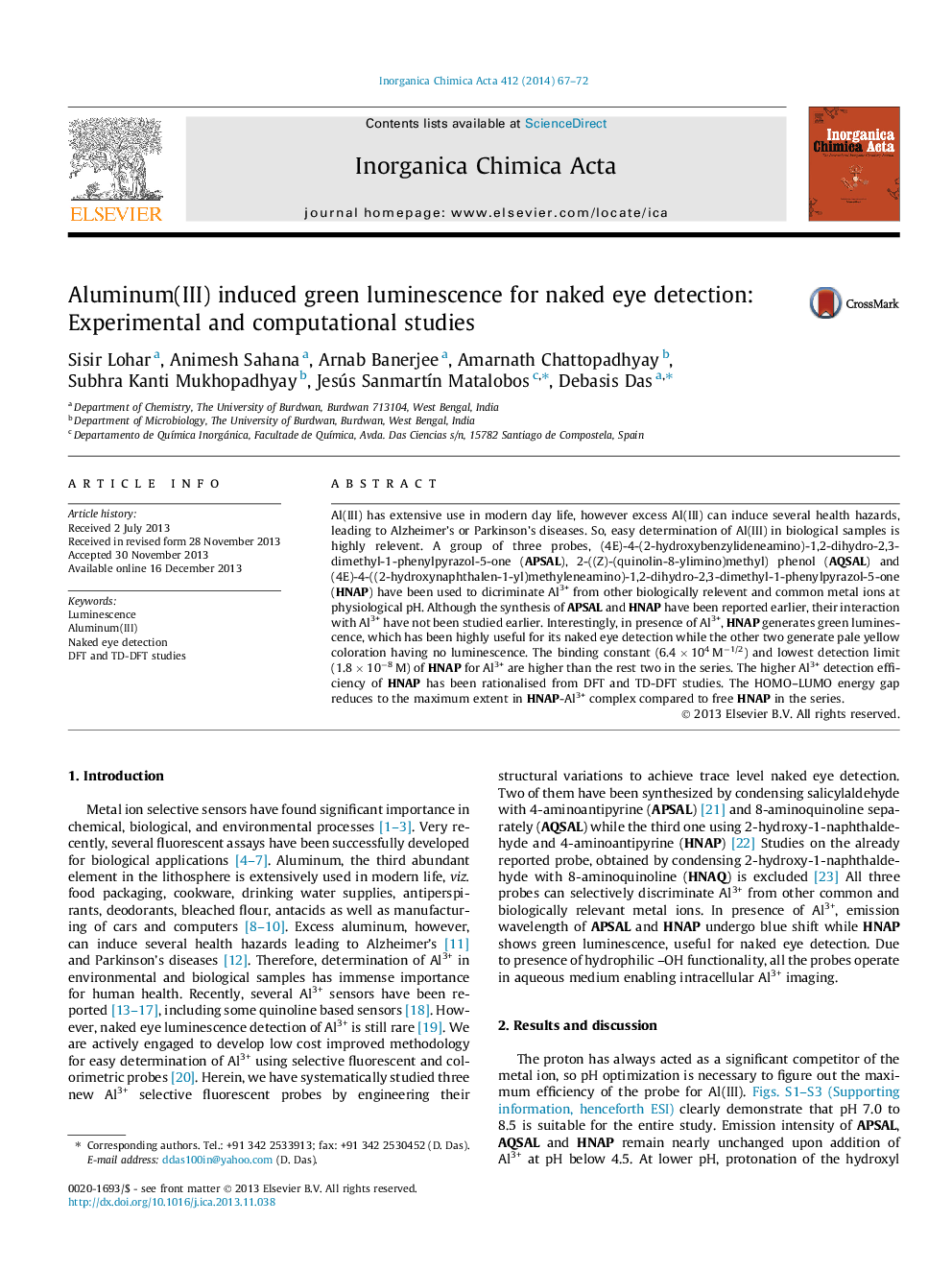| Article ID | Journal | Published Year | Pages | File Type |
|---|---|---|---|---|
| 1306947 | Inorganica Chimica Acta | 2014 | 6 Pages |
•Antipyrene based naphthalene derivative for naked eye detection of Al3+.•The probe emits green luminescence in presence of Al3+.•Intracellular Al3+ has been detected.•Computational studies (DFT and TDDFT) support experimental observations.
Al(III) has extensive use in modern day life, however excess Al(III) can induce several health hazards, leading to Alzheimer’s or Parkinson’s diseases. So, easy determination of Al(III) in biological samples is highly relevent. A group of three probes, (4E)-4-(2-hydroxybenzylideneamino)-1,2-dihydro-2,3-dimethyl-1-phenylpyrazol-5-one (APSAL), 2-((Z)-(quinolin-8-ylimino)methyl) phenol (AQSAL) and (4E)-4-((2-hydroxynaphthalen-1-yl)methyleneamino)-1,2-dihydro-2,3-dimethyl-1-phenylpyrazol-5-one (HNAP) have been used to dicriminate Al3+ from other biologically relevent and common metal ions at physiological pH. Although the synthesis of APSAL and HNAP have been reported earlier, their interaction with Al3+ have not been studied earlier. Interestingly, in presence of Al3+, HNAP generates green luminescence, which has been highly useful for its naked eye detection while the other two generate pale yellow coloration having no luminescence. The binding constant (6.4 × 104 M−1/2) and lowest detection limit (1.8 × 10−8 M) of HNAP for Al3+ are higher than the rest two in the series. The higher Al3+ detection efficiency of HNAP has been rationalised from DFT and TD-DFT studies. The HOMO–LUMO energy gap reduces to the maximum extent in HNAP-Al3+ complex compared to free HNAP in the series.
Graphical abstractAntipyrene based naphthalene derivative is useful for naked eye green luminescent detection of intracellular Al3+.Figure optionsDownload full-size imageDownload as PowerPoint slide
